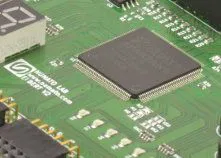Table of Contents:
Today a bit of raspberry anatomy and fashion in good taste. The naked Raspberry Pi is not only worth”being outfitted, it surely >>should<< be done. Why use only the most basic functionalities when you have the best minicomputer in the world at hand? Accessories mean new features, and besides, upgrading is always fun.
What to add to Raspberry Pi?
The applications of the Raspberry Pi computer are countless. This is no exaggeration in saying that as there are only more of them as time goes by. The maker’s imagination never fails, and the emergence of new features goes hand in hand with the ever-emerging accessories. And since there are still more and more add-ons, it only speaks loud of the popularity of the base hardware. Raspberry Pi still remains the most popular minicomputer in the world. Design applications are for one thing, but what about hardware selection?
Raspberry Pi HAT
HAT stands for “Hardware Attached on Top”, which is simply hardware attached on top. Examples? HiFiBerry DAC+ sound card or the PiJuice HAT battery + power platform. Multifunctionality is something we’ll look into further.
Advantages? At least four basic ones:
- No soldering. Assembly is simplified. In older HiFiBerry modules, you had to solder an 8-pin header. This is not a problem for experienced assemblers, but not everyone is a solder.
- Reliable design. The connection between the Raspberry Pi and the add-on board is very solid.
- Quick module change. One HAT can be installed once, and another in a moment. Like with changing headgear.
- All order, no chaos. No wires means no clutter when you connect by physically putting the HAT on the Raspberry Pi.

There are a whole multitude of HATs for the Raspberry Pi. Most of them work with any RPi model with 40 pins (talking about models that went on sale after 2014). You still need to attach GPIO pins to the Raspberry Pi Zero and… that’s basically it. If you’re looking for hardware meant for specific project, you should check carefully to see if your chosen HAT does what you expect and how it’s programmed. Note for Raspberry Pi 400 owners – you will need a breakout board for the GPIO pins. Such a GPIO adapter can of course be found at Botland in the category dedicated to the RPi 400.
Among the best HATs for Raspberry Pi at Botland store you will find hardware in categories:
- Raspberry Pi HAT – motor & servo controllers,
- Raspberry Pi HAT – keyboards & displays,
- Raspberry Pi HAT – sound cards & HiFiBerry related,
- Raspberry Pi HAT – communications,
- Raspberry Pi HAT – lead expanders,
- Raspberry Pi HAT – sensors,
- Raspberry Pi HAT – power supply.
Raspberry Pi case (enclosure)
First of all, protection and cooling. But also a rich selection of shapes and colors. This is kind of the umbrella of our Raspberry. The basis of choice is of course the dimensions – in this step we take into account the design constraints. Then we can deal with the choice of material and possible additional functions to be performed by our case.
Botland store recommended choices are:


There is no single best enclosure and it all depends on the generation of Raspberry Pi you are currently using. Other worthy suggestions besides JustPi’s bespoke and comprehensive chassis are Argon40 and LeapMatic interesting modular cases that stack together like LEGO bricks. Although we can work with Raspberry Pi without a housing, it is worth opting for one for many reasons.
With a case your Raspberry Pi will take on the feel of a professional computer instead of a bare board full of connectors, but this is just the tip of the iceberg and at most an aesthetic value – a matter of taste. We are mainly interested in the built-in cooling, special features and wide-ranging protection against damage.
Do not forget to take a look at the Raspberry Pi cases at reduced prices – there’s plenty!
Raspberry Pi screen / display
Raspberry Pi will display a desktop image, a movie or even a video game for us. We can opt for either an alphanumeric display or a slightly more classic and better known one – a touchscreen display. Capacitive and resistive touch displays and more are available in various types:
- LCD, LED, OLED,
- TFT,
- e-paper (non-fatiguing and resembling a sheet of paper),
- segmented.


Why such a display? Well, it’s a ton of new functionality. The Raspberry Pi touchscreen monitor gives us the ability to create integrated all-in-one projects. Our computer starts to resemble a tablet or an e-book reader. So we can operate individual models without a physical keyboard or mouse. Alphanumeric displays, on the other hand, are most often chosen by users with specific design applications in mind – where the design may be specialized, but the display needs to be simplified.
How useful was this post?
Click on a star to rate it!
Average rating 0 / 5. Vote count: 0
No votes so far! Be the first to rate this post.






















